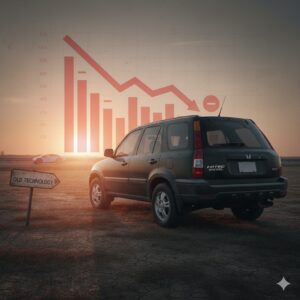Summary
The BCG Matrix of Honda Motors offers an in-depth strategic analysis of how one of the world’s largest automakers manages its diversified business portfolio. Honda operates across multiple industries, including passenger vehicles, motorcycles, scooters, power equipment, electric mobility, hybrid technology, robotics, and aircraft manufacturing. With such a wide range of businesses, the Boston Consulting Group (BCG) Matrix helps identify which divisions are driving growth, which are generating stable profits, which need further investment, and which might require restructuring.
This comprehensive evaluation of the BCG Matrix of Honda Motors (2025) categorizes each major segment into Stars, Cash Cows, Question Marks, and Dogs, providing a clear picture of Honda’s global strategy. The blog explains how Honda maintains leadership in the two-wheeler market, strengthens its hybrid vehicle lineup, invests in electric mobility and robotics, and manages its aircraft and legacy engine divisions.
By the end of this analysis, you’ll understand how Honda uses strategic portfolio management to remain competitive, profitable, and future-ready in a rapidly changing global automotive landscape.
Honda Motor Co., Ltd., founded in 1948 by Soichiro Honda, is now one of the world’s most influential automotive and engineering companies. Honda is unique because it is not just an automobile manufacturer; it leads the world in motorcycle production, produces aircraft, invests in renewable energy systems, and pioneered humanoid robotics through ASIMO.
Honda is globally respected for innovation, reliability, performance, and long-term sustainability. Its wide product portfolio includes:
Passenger cars
Motorcycles and scooters
Hybrid vehicles
Electric mobility solutions
Marine engines
Power equipment
Aircraft (HondaJet)
Robotics and automation
Such a vast business portfolio demands structured strategic thinking. The BCG Matrix of Honda Motors provides a clear method for assessing resource allocation, market opportunities, growth potential, and profitability of each business unit.
What is the BCG Matrix
The Boston Consulting Group (BCG) Matrix, also known as the Growth-Share Matrix, helps organizations evaluate their business segments based on:
Market Growth Rate
Reflects how rapidly an industry or segment is expanding.
Relative Market Share
Measures a company’s dominance compared to its competitors.
These factors create four quadrants:
Stars – High market share in high-growth markets
Cash Cows – High market share in low-growth markets
Question Marks – Low market share in high-growth markets
Dogs – Low market share in low-growth markets
Applying the BCG Matrix to Honda Motors provides strategic clarity on performance, future opportunities, and investments.
BCG Matrix of Honda Motors – Detailed Analysis
Stars (High Market Share, High Market Growth)

Honda Motorcycle Division
Honda is the largest motorcycle manufacturer in the world. From scooters to powerful big-bike models, Honda dominates multiple segments.
High demand in developing nations
Growing two-wheeler adoption due to urban mobility needs
Strong presence in Asia, including India, Indonesia, Vietnam, and Thailand
Reliable, fuel-efficient engines that customers trust
Massive dealer network creating brand advantage
The two-wheeler market in Asia continues to grow consistently, driven by affordability and daily commuting needs. Honda controls a substantial global market share, especially with top models such as:
Honda Activa
Honda Shine
Honda CB series
Honda Gold Wing
Honda CBR series
Because of its enormous market share and strong growth environment, the motorcycle division is a key Star in the BCG Matrix of Honda Motors.
Honda Hybrid Car Division
Honda has been at the forefront of hybrid technology with models like:
Honda Accord Hybrid
Honda CR-V Hybrid
Honda Insight
Honda Civic Hybrid
Hybrid vehicles are experiencing high growth as more countries adopt strict emission regulations and consumers shift toward sustainable mobility.
Honda’s hybrid technology is highly advanced due to:
Efficient dual motors
Long-term engineering experience
Low maintenance requirements
Fuel efficiency advantages
Hybrid car demand is projected to grow worldwide as a transition phase between combustion engines and full EVs, making this division a Star for Honda.
HondaJet (Honda Aircraft Company)
The global demand for personal aviation and light aircraft is increasing. HondaJet has quickly gained recognition for:
Fuel efficiency
Advanced aerodynamics
Unique over-the-wing engine mount
Premium luxury aviation experience
The light business jet market is growing at a strong pace. Although this division is comparatively smaller, HondaJet holds a high and rising share in its niche, making it a Star segment for Honda.
Cash Cows (High Market Share, Low Market Growth)

Honda Automobile Division (Traditional ICE Models)
Honda’s conventional internal combustion engine (ICE) vehicles, such as:
Honda Civic
Honda City
Honda Accord
Honda CR-V
Honda HR-V
Honda Fit/Jazz
are globally popular for reliability and fuel efficiency.
However, the ICE car market is now experiencing slower growth due to global EV adoption, stricter emission norms, and competition from electric-first brands.
Despite slower market growth, Honda maintains strong market presence and customer loyalty. High sales volumes and established popularity make the traditional car lineup a Cash Cow.
Honda Marine Engines and Power Equipment
Honda’s marine engines, generators, lawnmowers, and power equipment divisions enjoy steady demand. These products are known for:
Durability
Fuel efficiency
Low noise
Technological reliability
Power equipment does not grow rapidly globally, but Honda is one of the top brands in the category.
Stable revenue and strong market share place these divisions firmly under Cash Cows.
Question Marks (Low Market Share, High Market Growth)

Honda Electric Vehicles (EV Segment)
Honda entered the EV market later than many competitors. Brands like Tesla, BYD, Hyundai, and MG have built powerful early dominance.
Honda’s EV attempts, including:
Honda e
Upcoming solid-state battery EVs
Partnership with Sony (Sony Honda Mobility)
are promising but currently have low market share.
The EV market is one of the fastest-growing industries in the world, pushing Honda to invest heavily in R&D, partnerships, and battery innovations.
Because Honda has high growth potential but low current EV share, this division is a critical Question Mark.
Honda Robotics (Post-ASIMO Era)
Honda gained global fame with ASIMO, one of the world’s most advanced humanoid robots. Although ASIMO was discontinued, Honda continues to explore:
AI-powered robotics
Automation systems
Remote-operated robotic devices
The robotics industry is expanding rapidly, but Honda currently holds a minimal market share due to strong competition from:
Boston Dynamics
Tesla
SoftBank Robotics
Emerging AI-robotics startups
Therefore, robotics falls under Question Marks, although it holds long-term opportunity.
Autonomous Vehicle Technology (Self-Driving Systems)
Honda is investing in autonomous technologies, including Level-3 self-driving capability via Honda Sensing Elite. However:
Competition is aggressive
Tesla, Waymo, and GM Cruise dominate the sector
Regulatory challenges slow market penetration
High growth but low current share places this segment under Question Marks.
Dogs (Low Market Share, Low Market Growth)

Honda Diesel Engines
Globally, the diesel engine market is shrinking due to emission restrictions, rising EV adoption, and consumer preference for cleaner technologies.
Honda produces very few diesel models, and its presence is small compared to competitors. As the market contracts, diesel becomes a Dog segment in the BCG Matrix of Honda Motors.
Honda’s Discontinued or Low-Demand Models
Several Honda models in various markets have been discontinued or underperform due to:
Low demand
Changing consumer preferences
High competition
These include niche models and older vehicles such as:
Honda CR-Z
Honda Clarity Fuel Cell
Honda Fit EV
These low-growth, low-share segments fall under Dogs.
Also Read: BCG Matrix of CEAT Tyres
Honda ASIMO (Discontinued)
Honda ASIMO was once a technological marvel, but due to limited commercial potential, Honda officially ended the ASIMO project.
Since it no longer contributes to commercial revenue, it belongs in the Dogs category despite its historical significance.
Strategic Insights from the BCG Matrix of Honda Motors
The BCG Matrix of Honda Motors (2025) reveals several strategic insights into the company’s approach:
Honda’s motorcycle division remains its strongest growth engine
Its hybrid car business shows strong future potential
Traditional ICE cars continue as profit stabilizers
EVs and robotics represent future innovation opportunities
HondaJet strengthens Honda’s presence in luxury aviation
Dogs such as diesel and discontinued models highlight shifting market dynamics
Honda’s balanced portfolio ensures that high-growth segments are supported by consistent revenue from mature divisions.
Challenges of Applying the BCG Matrix to Honda Motors
Honda operates in highly diverse industries, which makes classification challenging:
Changing automotive regulations impact growth projections
Electric vehicle disruption affects ICE and hybrid segments
Robotics and autonomous tech markets evolve unpredictably
Motorcycle markets differ widely across regions
Aviation market behaves differently from automotive sectors
Even with these complexities, the BCG Matrix offers a valuable strategic perspective on Honda’s global portfolio.
Conclusion
The BCG Matrix of Honda Motors (2025) reveals how Honda balances innovation, tradition, and future technologies through a well-structured business portfolio.
Its Star segments, including hybrid cars, motorcycles, HondaJet, and premium electrified performance, ensure continuous innovation and strong global demand.
Its Cash Cows, particularly traditional cars and power equipment, provide financial stability and consistent revenue.
Its Question Marks, including electric vehicles, robotics, and autonomous driving, represent high-potential opportunities demanding investment and strategic direction.
Its Dogs, including diesel engines and discontinued models, reflect shifting industry trends and Honda’s adaptation to cleaner, smarter mobility systems.
This strategic positioning ensures Honda continues to evolve, lead, and remain resilient in a rapidly transforming global mobility landscape.
FAQs
What is the BCG Matrix of Honda Motors?
It is a strategic tool that categorizes Honda’s business segments into Stars, Cash Cows, Question Marks, and Dogs based on their market share and market growth.
Which Honda divisions are Stars?
Motorcycles, hybrid vehicles, and HondaJet are the strongest Star segments.
What are the Cash Cows for Honda Motors?
Traditional petrol vehicles, power equipment, and marine engines.
Which Honda segments are Question Marks?
Electric vehicles, robotics, and autonomous driving technologies.
Which divisions fall under Dogs for Honda Motors?
Diesel engines, discontinued models, and older robotics programs like ASIMO.
A digital marketer with a strong focus on SEO, content creation, and AI tools. Creates helpful, easy-to-understand content that connects with readers and ranks well on search engines. Loves using smart tools to save time, improve content quality, and grow online reach.

